 Ronald Aug . March 20
Ronald Aug . March 20
Understanding YouTube's Algorithm
Best Practices for Growth on YouTube
- Consistency, Experimentation, and Community Building
- Creating High-Impact Thumbnails and Titles
- Niche Content and Expertise


 Robert Benjamin
Robert Benjamin
Best Practices for Growth on YouTube
Consistency, Experimentation, and Community Building
a) Consistency
Importance of Consistency
To maintain audience engagement and attract new subscribers, it is essential to upload videos on a consistent basis. This not only ensures fresh content for viewers, but it also helps improve the channel's performance in the YouTube algorithm. High-ranking channels often upload at least 1-3 videos weekly.
Tips for Consistency
- Develop a content calendar for planning and scheduling videos.
- Create a backlog of videos to maintain a consistent posting schedule.
- Ensure the quality of content is consistent in all videos.
Maintaining Consistency
As seen in the chart above, channels with consistent upload schedules tend to experience higher growth rates compared to channels with sporadic uploads.
b) Experimentation
Importance of Experimentation
Experimenting with different content types and formats can help YouTube creators find new opportunities to attract and engage their audience. This can lead to increased subscriber numbers and watch time.
Tips for Experimentation
- Try out different content formats (e.g., tutorials, vlogs, interviews) to see what engages your audience.
- Experiment with video styles and editing techniques.
- Test different thumbnail designs and video titles.
- Learn how to make YouTube videos that resonate with your target audience.
c) Community Building
Importance of Community Building
A strong community can foster increased engagement and loyalty among viewers. By actively participating in the community and responding to viewers' comments, creators can establish a stronger connection with their audience.
Tips for Community Building
- Respond to comments and engage with viewers on social media.
- Host Q&A sessions or livestream events to connect with the audience.
- Organize contests or giveaways to incentivize viewer interaction.
- Collaborate with other creators and participate in YouTube collabs.
Community Building Success Stories
As seen in the case study above, channels that actively engage with their community and collaborate with other creators often experience higher growth rates.
d) Key Takeaways
- Maintaining a consistent upload schedule is crucial for growth on YouTube.
- Experimenting with content types and formatting can help creators identify new opportunities and expand their audience.
- Engaging with the community and collaborating with other creators can foster loyalty and growth.
Stay informed with current trends and strategies by subscribing to YouTube newsletters.
Best Practices for Growth on YouTube
Creating High-Impact Thumbnails and Titles
The thumbnail and title of a video greatly influence a viewer's decision to click and watch your content. With the right strategy, you can increase your Clickthrough Rate (CTR) and ultimately increase your watch time, leading to greater visibility on the platform. In this section, we explore the best practices for creating high-impact thumbnails and titles that attract more viewers and promote growth on YouTube.
- A well-designed thumbnail can increase CTR by up to 154 %
- 90% of the best-performing videos on YouTube have custom thumbnails
Table 1: Components of a high-impact thumbnail
| Component | Description |
|---|---|
| High-quality image | Use a high-resolution image that is clear and catchy, featuring colors that contrast well against YouTube's white background. |
| Compelling subject | Showcase the main subject of your video, either an interesting object, scene, or person, to pique viewers' interest. |
| Face and emotion | Including faces, particularly with exaggerated expressions, can help humanize your content and draw viewers in. |
| Brand consistency | Maintain a consistent style in your thumbnails, such as using the same font, color scheme, or logo, to build brand recognition. |
| Readable text | If you include text, make sure it is large, bold, and easy to read, even on smaller screens. Avoid using full sentences – opt for keywords and phrases instead. |
- Do use bright, contrasting colors to make your thumbnail stand out.
- Do test different thumbnail designs to see what works best for your audience.
- Do keep titles concise, descriptive, and engaging.
- Do incorporate relevant keywords for YouTube in your title to improve discoverability.
- Don't use clickbait or misleading thumbnails and titles, as this will harm your credibility and may result in viewer dropoff or even penalties from YouTube.
- Don't use low-quality images or too much text in your thumbnail.
This chart shows how CTR and watch time are essential factors in video performance. Higher CTR, combined with increased watch time, leads to higher rankings and visibility on YouTube.
Additional Resources
For further information and best practices on creating thumbnails and titles, consider the following resources:
Best Practices for Growth on YouTube
Niche Content and Expertise
Why Niche Content is Important for Growth
Niche content has several advantages:
- Higher likelihood of a dedicated subscriber base
- Less competition with other YouTubers
- Increased trust and authority in your chosen field
- Better chances of ranking in YouTube search results
Identifying Your Niche and Expertise
You'll first need to determine your niche and area of expertise. Start by considering your passions, interests, or areas where you possess specialized knowledge. What can you offer to a specific audience that may not be widely available on YouTube?
Do's:
- Do thorough research to identify a sustainable niche with enough audience interest.
- Do optimize your video titles, descriptions, and tags for searchability within your niche.
- Do engage with your audience through comments and social media to foster loyalty and growth.
- Do collaborate with other creators in your niche to expand your reach and grow your channel.
Don'ts:
- Don't create content only for the sake of popularity or short-term trends.
- Don't attempt to cover every topic within your niche. Instead, focus on specific areas where you can provide unique value and expertise.
- Don't ignore audience feedback. Use their comments and suggestions to adapt and improve your content.
- Don't expect overnight success. Building a loyal audience within a niche takes time and effort.
Here are some YouTube channels that have found success by focusing on niche content:
- You Suck at Cooking - A comedic cooking channel with unique and entertaining recipes.
- Ask a Mortician - A funeral director answers questions related to death, myth busting, and funerals.
- The Detail Geek - Provides detailed auto detailing videos and tutorials.
- The Fitness Marshall - Offers dance workout videos set to popular music.
For further guidance on creating an effective content strategy and schedule, consider reviewing the resources provided in this guide on developing a content strategy and schedule.
By focusing on niche content and establishing yourself as an expert, you can build trust among your audience, grow your YouTube channel, and find long-term success as a creator.
Leveraging YouTube Analytics
- Interpreting Data YouTube Algorithm Insights and Adjustments
- Key Metrics to Track Performance
- Watch Time
- Audience Retention
- Click-through Rate (CTR)
- How YouTube's Algorithm Ranks Videos


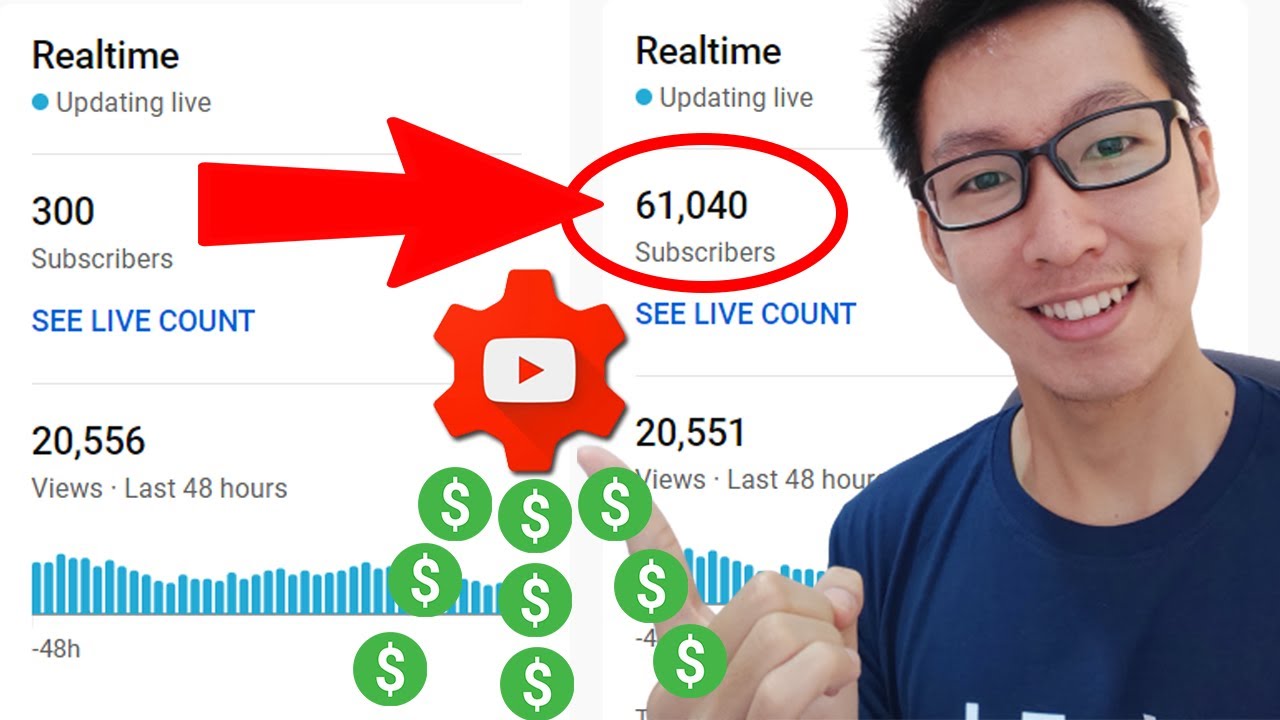 Edy Chandra
Edy Chandra
Leveraging YouTube Analytics
Interpreting Data YouTube Algorithm Insights and Adjustments
In this section, we will delve into the world of YouTube analytics and learn how to unlock valuable insights to optimize video content and adapt to the ever-evolving YouTube algorithm. We'll explore the key data points, tools, and strategies that can refine your approach to content creation and audience engagement.
Analyzing Key Performance Indicators (KPIs)
To interpret your YouTube data effectively, pay close attention to the following KPIs:
- Watch time: The total amount of time viewers spend watching your videos. Higher watch times can lead to better visibility and discoverability due to YouTube's algorithm favoring longer viewed content.
- Audience retention rate: The percentage of your video watched by viewers. This metric highlights how engaged your audience is with your content and can be used to adjust your video editing and storytelling techniques.
- Click-through rate (CTR): The percentage of thumbnail impressions that result in actual video views. This can help determine the effectiveness of your thumbnails and titles in attracting attention and driving user engagement.
- Engagement metrics: Likes, comments, shares, and subscriber growth can highlight how viewers are engaging with your content, and can provide valuable insights into potential improvements.
Leveraging YouTube Analytics Tools
YouTube Studio provides a user-friendly platform for analyzing your channel's performance. Access the YouTube Studio dashboard to monitor analytics such as watch time, audience retention, clicks, and subscriber growth. Additionally, consider utilizing third-party tools like Tubebuddy and VidIQ to gain even deeper insights and optimization suggestions tailored specifically to your channel.
YouTube Algorithm Adjustments and Adaptation
Do's:
- Regularly review your analytics data to identify trends, opportunities, and areas for improvement.
- Experiment with different types of content, titles, thumbnails, and posting schedules to determine what works best for your audience.
- Implement changes and optimizations based on data-driven insights, and continually monitor your analytics to assess the impact they have on your channel's performance.
- Stay informed about YouTube algorithm updates, and adapt your content strategy accordingly.
Don'ts:
- Neglect your analytics data, as this can limit your understanding of your audience and hinder your ability to adjust to changes in the YouTube ecosystem.
- Ignore the importance of optimizing your video titles, tags, descriptions, and thumbnails, as these factors heavily influence your video's visibility and discoverability.
- Resist experimenting with new content formats or trends, as this can limit your potential to grow and reach new audiences.
- Overlook the impact of the YouTube algorithm on your content's visibility and engagement, and fail to adjust your content strategy accordingly.
Leveraging YouTube Analytics
Key Metrics to Track Performance
YouTube Analytics provides creators with a wealth of insights and data to help them understand and improve their channel's performance. Here are some key metrics that you should track to measure your YouTube channel's performance:
-
Watch Time: The total amount of time that viewers have spent watching your video content. This is a crucial metric, as YouTube prioritizes videos with higher watch time in search results and recommendations.
-
Audience Retention: This metric shows the percentage of your video that viewers watch before leaving. Higher retention rates indicate that viewers are finding your content engaging, which is important for increasing watch time and channel growth.
-
Views: The total number of times your video has been viewed. More views indicate higher popularity, but remember to also consider watch time, as YouTube prioritizes videos that keep viewers watching for longer periods.
-
Click-through rate (CTR): The percentage of users who clicked on your video thumbnail after seeing it in search results or recommendations. Higher CTR indicates that your thumbnail and title are enticing viewers to click and watch your video.
-
Subscriber Growth: The total number of subscribers your channel has gained or lost over a specific time period. Rapid subscriber growth generally signifies that your content is resonating with viewers.
-
Engagement Metrics: These include likes, dislikes, comments, and shares. These metrics help you gauge viewer sentiment and involvement with your content.
-
Traffic Sources: This metric provides insights into how viewers are finding your content. By understanding where your traffic comes from, you can tailor your content and promotion strategies to reach more viewers.
Do's:
- Regularly monitor your channel's performance, setting goals to improve key metrics.
- Use A/B testing for thumbnails, titles, or descriptions to increase CTR.
- Analyze audience retention rates to identify drop-off points and improve your content's engagement.
Don'ts:
- Don't focus solely on views or subscriber count; consider watch time and audience retention.
- Don't disregard audience feedback through comments and engagement metrics.
- Don't forget to track the performance of your SEO optimization efforts.
By tracking these key performance metrics using YouTube Analytics, you can identify trends, areas of improvement, and optimize your content strategy to better serve your target audience and grow your channel. For more guidance on content creation, check out our article on how to make YouTube videos.
Leveraging YouTube Analytics
YouTube Analytics Advanced Features
YouTube Analytics is a powerful tool that can provide you with valuable insights into your channel's performance. By understanding and utilizing the advanced features available, you can make informed decisions to grow your channel and boost engagement. In this section, we'll explore some of these advanced features and discuss how to use them effectively.
Traffic Sources
Understanding where your viewers are coming from is crucial for optimizing your content and reaching a wider audience. Access the Traffic Sources report to analyze the various sources driving traffic to your videos. These sources may include:
- YouTube search
- Suggested videos
- External sources like websites and social media platforms
- Playlists
Playback Locations
This report displays the locations where your content is being watched, such as on YouTube itself or through embedded videos on external websites. Use this information to identify potential partnerships with websites or forums that are driving views to your content.
Demographics
Watch Time Reports
Watch time is a crucial metric as it directly influences the YouTube algorithm and your channel's success. Delve into watch time reports to identify patterns, such as:
- Videos with higher watch time
- Times and days when your content is most viewed
- Viewer retention rates and drop-off points
Based on these insights, you can make informed decisions about your content strategy, such as revising your publishing schedule or addressing common viewer drop-off points in your videos.
Real-time Analytics
Real-time analytics provide an up-to-date view of your channel's performance. Monitor these metrics to identify videos that are performing well or underperforming, allowing you to quickly adapt your content strategy.
Annotations and Cards
When used effectively, annotations and cards can drive engagement and further interaction with your channel. Analyze the click-through rates (CTR) of your annotations and cards to determine which types are most effective and which may need improvement.
Top Videos
The Top Videos report shows your best-performing videos based on various metrics (views, watch time, etc.). Use this information to analyze trends and replicate successful elements in future content.
- Do set specific, measurable goals for your channel before diving into analytics. This will help you stay focused and make the most of the data available.
- Don't get overwhelmed by the countless metrics available. Focus on the ones most relevant to your goals and growth strategy.
- Do periodically compare your channel's performance with competitors to ensure you stay on top of trends and industry benchmarks.
- Don't solely rely on YouTube Analytics. Supplement your data analysis with qualitative insights, such as regularly engaging with your audience and collecting feedback.
Remember, consistent analysis and informed decision-making are the keys to a successful YouTube channel. By leveraging YouTube Analytics' advanced features, you can make data-driven decisions that lead to channel growth and enhanced viewer engagement. As you continue to develop your channel, consider checking out websites for YouTube creators to further your knowledge and stay informed on the latest trends and industry news.

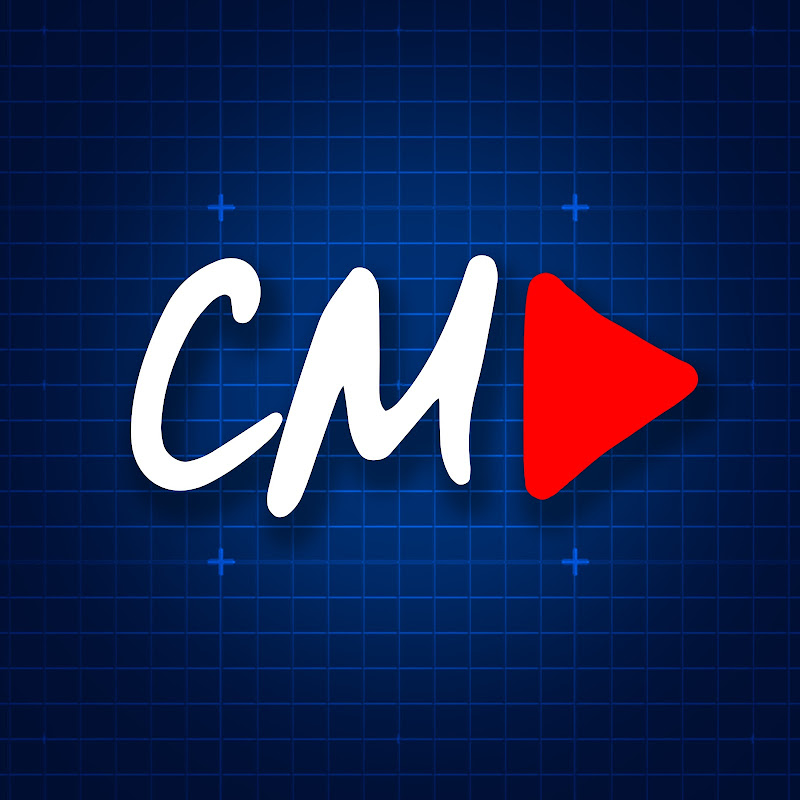
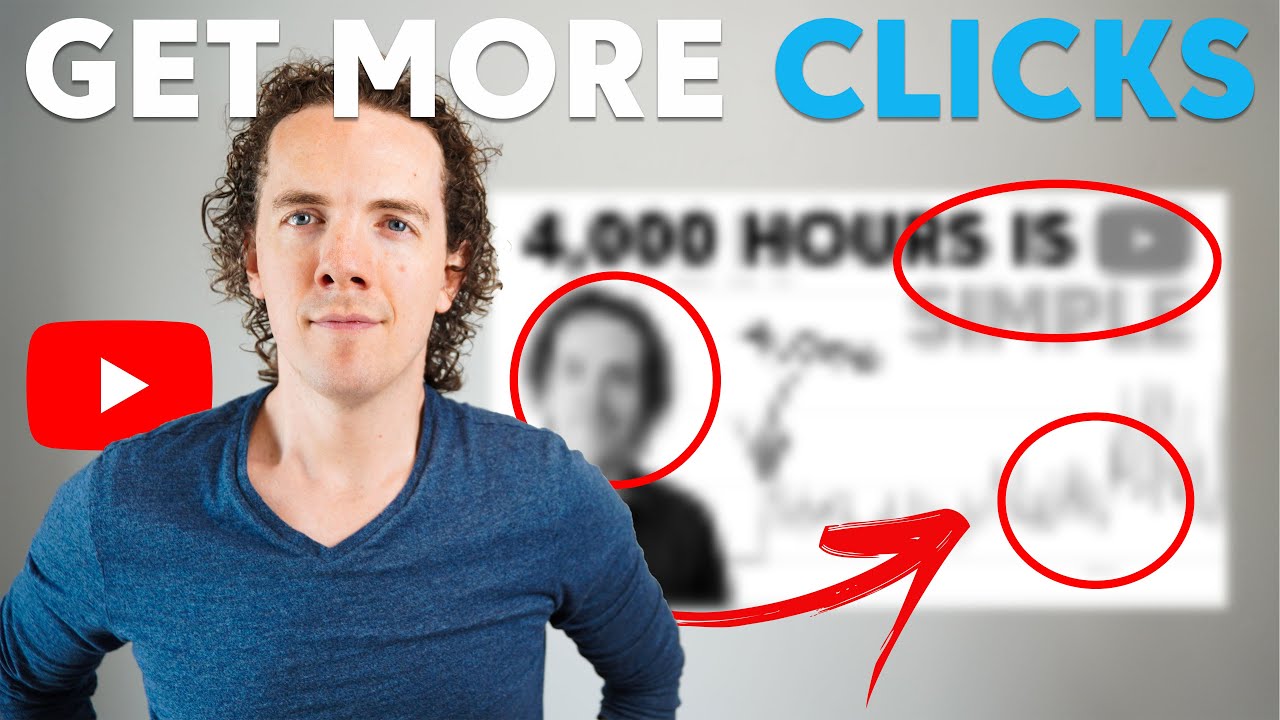 Channel Makers
Channel Makers
Core Components of YouTube's Algorithm
In this section, we will discuss the core components that make up YouTube's algorithm and how they influence the content discovery and ranking system on the platform.
Watch Time
Watch time is one of the most crucial factors in YouTube's algorithm. It is the total amount of time viewers spend watching a video or a creator's content. The longer the watch time, the more YouTube is likely to recommend that video to others.
Stats:
- A 2017 study found that increasing watch time by 1% led to a 1.35% increase in impressions (source: YouTube Creator Academy).
- The average mobile viewing session on YouTube is over 40 minutes (source: YouTube).
Do's:
- Create engaging and high-quality content to keep viewers watching.
- Utilize video series and playlists to maintain viewer retention.
- Embed calls-to-action throughout the video to encourage viewers to watch more.
Don'ts:
- Misleading titles, thumbnails, or descriptions that don't match the video content.
- Aimlessly prolonging the duration of the video to inflate watch time.
Audience Retention
Audience retention refers to the percentage of viewers that continue watching a video as it progresses. High audience retention rates indicate engaging content that keeps viewers watching to the end. YouTube rewards videos with high audience retention in search rankings and recommended content.
- A video with an audience retention rate of 60% means 60% of viewers watched the entire video.
- A 10-minute video that held 80% of its audience until the 7-minute mark had a higher audience retention than one with only 60% for the first 5 minutes.
Do's:
- Optimize video pacing, editing, and storytelling to maintain viewer interest.
- Utilize hooks and cliffhangers to encourage viewers to watch the entire video.
Don'ts:
- Slow introductions or lengthy intros that cause viewers to leave early.
- Filler content or fluff that does not contribute to the overall value of the video.
Click-through Rate (CTR)
Click-through rate (CTR) is the percentage of viewers who click on a video's thumbnail after seeing it in search results, recommendations, or on the homepage. High CTR indicates that the video title, description, and thumbnail are intriguing and capture viewers' attention effectively.
Stats:
- A good CTR on YouTube is generally between 2% and 10% (source: YouTube).
- For videos with over 100k views, the average CTR is 7.8% (source: Tubebuddy).
Do's:
- Create eye-catching and relevant thumbnails that clearly represent the content of the video.
- Use compelling titles and descriptions to entice viewers to click on the video.
Don'ts:
- Clickbait titles or thumbnails that deceive viewers or fail to deliver on their promises.
- Using text-heavy or cluttered thumbnails that are difficult to understand.
By understanding the core components of YouTube's algorithm, creators can optimize their content and maximize their reach on the platform. For help in creating engaging videos, check out our article on how to make YouTube videos.
How YouTube's Algorithm Ranks Videos
Key Factors and Metrics
The YouTube algorithm takes numerous factors into account when ranking videos, including:
- Click-through rate (CTR): The percentage of users who clicked on a video thumbnail out of the total number of impressions (thumbnail views).
- Watch time: The total amount of time users have spent watching a video.
- Audience retention: The percentage of viewers who continue watching a video as it progresses.
- Likes and dislikes: The total count of likes and dislikes on a video, which helps YouTube understand a video's popularity and user engagement.
- Video engagement: The number of comments, shares, and subscriber conversions a video receives.
- Session duration: The total amount of time users spend on YouTube during a single visit, including all videos watched.
- Session starts: The number of users who start watching videos on YouTube after clicking a particular video from search, notifications, or external sources.
Here's a comparison chart of these factors:
| Factor | Importance | Explanation |
|---|---|---|
| CTR | High | Higher CTR indicates better thumbnail and title performance. |
| Watch time | High | Longer watch times show greater audience interest and engagement. |
| Audience retention | Medium | Higher retention indicates that viewers find the content captivating. |
| Likes and dislikes | Medium | Helps YouTube gauge overall popularity and user feedback. |
| Video engagement | Medium | Higher engagement levels show greater audience interaction with the video. |
| Session duration | Low | May indirectly affect video rankings but is less influential than other factors. |
| Session starts | Low | Helps YouTube understand a video's capability to attract users to the platform. |
To enhance your YouTube video rankings, consider the following do's and don'ts:
Do's
- Create captivating and informative video titles.
- Use high-quality, engaging custom thumbnails to improve CTR.
- Produce content that maintains audience retention throughout the video.
- Encourage likes, comments, and shares to improve engagement.
- Publish videos consistently to maximize session durations and starts.
- Utilize keywords for YouTube to enhance searchability and discoverability.
Don'ts
- Don't use clickbait titles or misleading thumbnails that fail to represent the video content.
- Don't create excessively long videos that might discourage viewers from watching.
- Don't neglect user feedback, as it can aid content improvement and audience retention.
- Don't use copyrighted material, as it might lead to a YouTube copyright strike.
To further your understanding of how YouTube's algorithm ranks videos, take a look at the YouTube Creators Academy, which offers valuable resources, case studies, and best practices. Additionally, you can explore the following resources:
- How to make YouTube videos for guidance on producing high-quality and engaging content.
- CTR YouTube for optimizing your video thumbnails.
- How to increase watch time on YouTube for boosting audience watch time.
With a solid understanding of how YouTube's algorithm ranks videos, you can better optimize your content, resulting in higher rankings and greater success on the platform.
The Evolution of YouTube's Algorithm
The YouTube algorithm has undergone several changes since its inception, shaping the platform and how content creators reach their audience. In this section, we will discuss the major milestones in the evolution of YouTube's algorithm, examine the impact of its updates, and explore the do's and don'ts for creators to succeed in this ever-changing landscape.
The Evolution of YouTube's Algorithm: Milestones
- 2005: YouTube is launched with a focus on views as the primary metric for ranking videos.
- 2012: The algorithm shifts towards watch time as an essential factor, aiming to promote content that keeps users engaged.
- 2013: The focus on watch time is extended to whole sessions, encouraging creators to retain viewers on the platform through video recommendations and playlists.
- 2016: YouTube prioritizes user satisfaction, measuring likes, dislikes, and comments to gauge the quality of content.
- 2018: A stronger emphasis is placed on CTR (Click-Through Rate), rewarding content with attractive thumbnails and enticing titles that capture audience attention.
Do's and Don'ts for Creators
- Do: Focus on producing high-quality content that engages viewers and keeps them on the platform.
- Do: Optimize thumbnails and titles to increase CTR and make content more discoverable.
- Do: Monitor user satisfaction through likes, dislikes, and comments. Engage with viewers and take feedback into account.
- Do: Curate playlists and series to encourage viewers to watch more of your videos in a single session.
- Don't: Attempt to use misleading or sensationalist thumbnails just to increase CTR—this could lead to a drop in audience satisfaction and harm your credibility.
- Don't: Neglect YouTube analytics - it is essential to keep track of your performance and know what works for your channel.
As a YouTube content creator, it's crucial to stay informed and adapt your strategy based on the current state of the algorithm. To learn more about producing engaging content and boosting your channel's performance, check out how to make YouTube videos. This resource will help you develop the skills necessary to succeed in the ever-changing world of YouTube.
YouTube Algorithm and the YouTube Partner Program

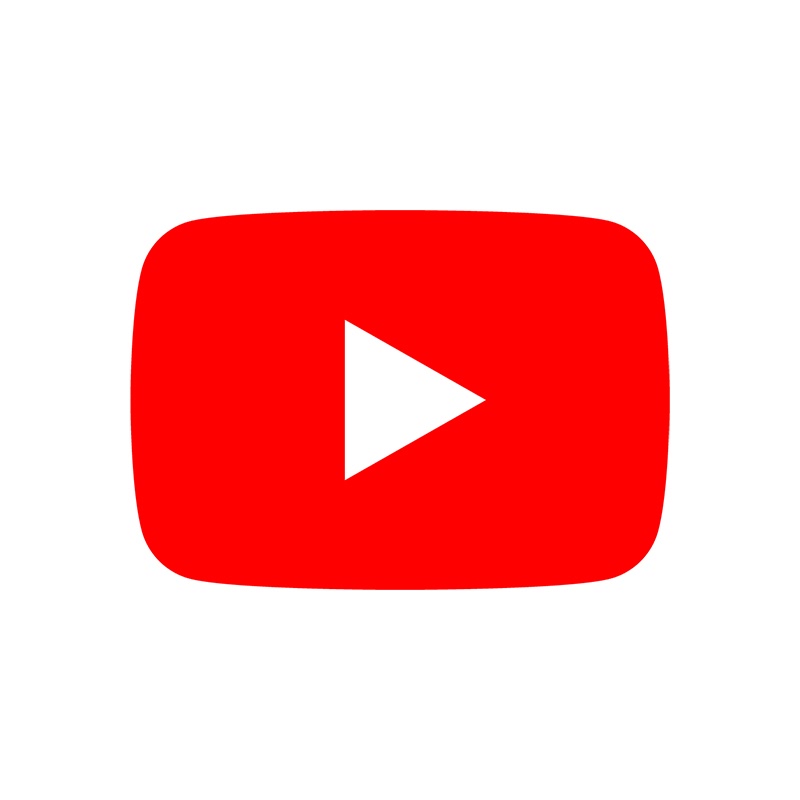
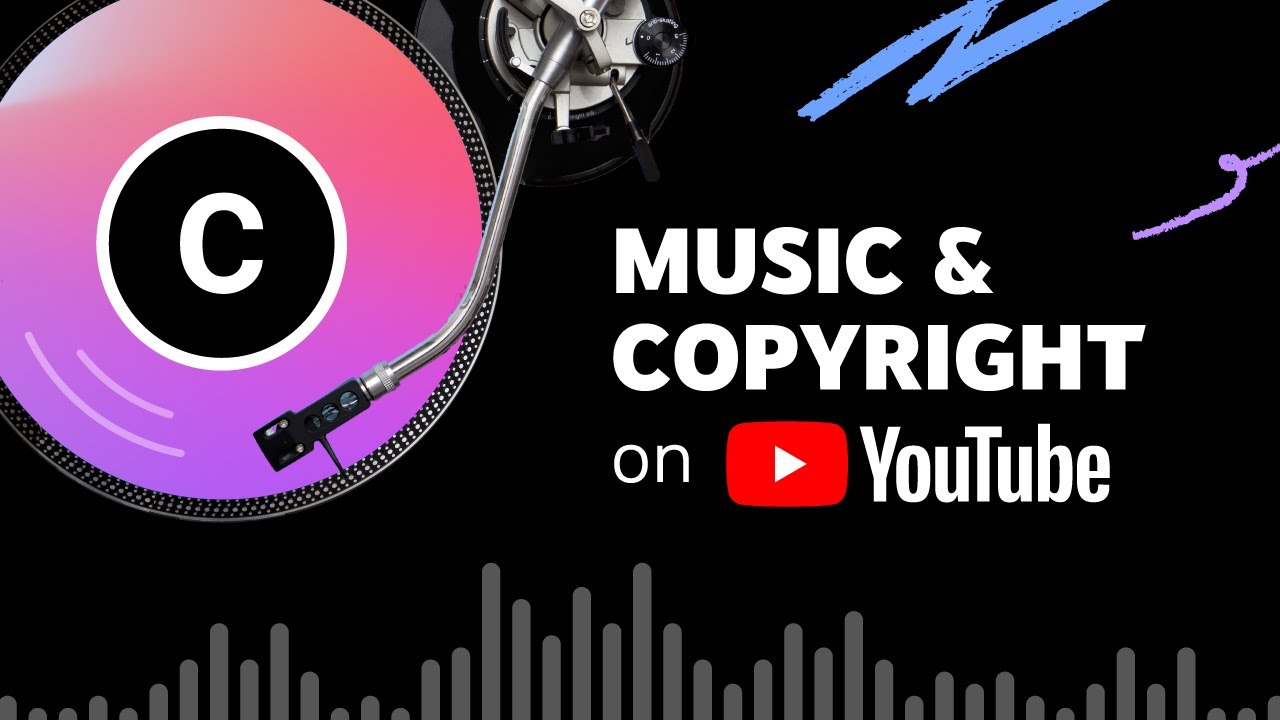 YouTube Creators
YouTube Creators
Monetization and the YouTube Algorithm
Understanding how the YouTube algorithm works is crucial for content creators looking to maximize their earning potential on the platform. In this section, we'll explore the relationship between monetization and the YouTube algorithm, providing valuable information on the do's and don'ts of creating content that performs well and generates revenue.
The Importance of Advertiser-Friendly Content
When it comes to monetization on YouTube, one of the most critical factors to consider is creating advertiser-friendly content. Videos that follow YouTube's advertiser-friendly content guidelines are more likely to be eligible for monetization and perform better in the algorithm.
Some of the key aspects of advertiser-friendly content include:
- No mature or explicit content
- No excessive violence or harmful content
- Minimal use of profanity or offensive language
- Avoiding controversial or sensitive subjects
For more information on creating advertiser-friendly content, check out our section on YouTube optimization.
The Role of Watch Time
The YouTube algorithm gives significant weight to watch time, which refers to the total amount of time viewers spend watching your content. Videos with higher watch time are more likely to be recommended to viewers and generate more ad revenue.
To increase watch time on your videos, consider implementing the following strategies:
- Create engaging and entertaining content
- Optimize video length (typically between 8-15 minutes)
- Use annotations and end screens to encourage viewers to watch more of your content
- Monitor your video analytics to identify trends and areas for improvement
For a comprehensive guide on how to increase watch time on your videos, refer to our section on strategies for increased watch time.
The YouTube Partner Program (YPP) is the monetization program that enables content creators to earn revenue from ads placed on their videos. To be eligible for the YPP, creators must meet specific requirements, including:
- At least 1,000 subscribers
- Minimum 4,000 watch hours in the past 12 months
- Adherence to YouTube's monetization policies and community guidelines
Once a part of the YPP, creators can monetize their videos through various types of ads, including display, overlay, and video ads. Additionally, creators can choose which ads they want to show and set the frequency of their appearance.
Do's
- Create high-quality, engaging content that aligns with YouTube's advertiser-friendly guidelines.
- Optimize video titles, tags, and descriptions using keywords for YouTube.
- Encourage viewer engagement through likes, comments, and shares.
- Continually analyze your video performance and make adjustments accordingly.
Don'ts
- Don't use clickbait titles or misleading tags, as this can harm your video's performance in the algorithm.
- Don't create content that violates YouTube's community guidelines or copyright laws, as this can result in demonetization or a copyright strike.
- Don't focus solely on monetization – remember to prioritize creating content that connects with and engages your audience.
- Don't ignore feedback from viewers – take their comments and suggestions into account when creating future content.
By keeping these points in mind, content creators can optimize their videos for monetization and improve their performance in the YouTube algorithm. This, in turn, will lead to increased revenue and grow their channels over time.
For the best resources and websites for YouTube creators, check out our list of best channels, websites, and newsletters for YouTube creator news.
YouTube Algorithm and the YouTube Partner Program
YouTube Restrictions and Guidelines
Statutory Guidelines of YouTube
The restrictions and guidelines within the YouTube platform are essential for maintaining the quality of content and creating a safe environment for both creators and viewers. Here are some fundamental restrictions and policies implemented on YouTube:
- Community Guidelines - These guidelines serve as the backbone for maintaining user safety, ensuring appropriate content and fostering a respectful and friendly comment system.
- Copyright Laws - YouTube has strict rules on copyright infringement, which prohibits the use of copyrighted materials within videos without appropriate authorizations.
- Advertiser-friendly content - Monetized videos must adhere to YouTube's advertiser-friendly content guidelines, refraining from explicit, harmful or sensitive content.
- Age restrictions - YouTube has set age restrictions on certain content for containing adult themes, which prevents young viewers from accessing inappropriate materials.
YouTube Partner Program Guidelines
The YouTube Partner Program (YPP) has specific guidelines and requirements that creators need to fulfill in order to be eligible for monetization.
- Subscriber count - A minimum of 1,000 subscribers is required to join the YPP.
- Watch time - Creators need at least 4,000 hours of watch time on their content within the last 12 months.
- Adherence to YouTube policies - Creators must comply with Community Guidelines, copyright laws, and other relevant platform policies.
- Country availability - The YPP is not available in all countries, so creators should ensure that their location is eligible for the program.
YouTube Content Restrictions
While content creation on YouTube allows creators the freedom to express themselves, there are specific restrictions on certain types of content:
-
Nudity and sexual content - YouTube enforces strict guidelines against explicit content, including pornography and other forms of adult content.
-
Harmful or dangerous content - Videos that could potentially harm viewers or encourage harmful behavior are not allowed on the platform.
-
Hateful and discriminatory content - YouTube prohibits content that promotes hatred, discrimination, or harassment towards individuals or groups based on factors like race, religion, or sexual orientation.
-
Violent and graphic content - Real-life violence, gore, and other disturbing visuals are not allowed on YouTube.
-
Cyberbullying and harassment - Publishing content that targets, threatens or harasses other individuals or groups on the platform.
-
Misinformation - Spreading false information about a particular topic, especially when it can lead to harm or panic, is discouraged.
-
Spam and deceptive practices - Producing content or comments that manipulate the platform, spam or mislead users through deceptive means.
-
Fake engagement and spamming - Using artificial means, such as bots, to inflate views, subscribers, likes or comments on their videos.
Tips to Adhere to YouTube Guidelines
Here are some useful practices that can help creators follow YouTube's restrictions and guidelines:
- Read and understand YouTube policies - Familiarize yourself with the guidelines provided by YouTube and regularly check for updates to stay informed about any changes.
- Audit your content - Regularly review your existing videos and remove or edit any content that might violate YouTube's guidelines.
- Be cautious with controversial topics - When addressing sensitive subjects, ensure your content is appropriate and respectful and provides accurate information.
- Stay aware of legal requirements - Understand your country's legal requirements and abide by them while producing content for your channel.
YouTube Resources for Creators
To enhance your knowledge about YouTube guidelines, restrictions, and other relevant information, consider the following resources:
- YouTube Creator Academy - Provides courses and learning materials about monetization, channel growth, and platform rules
- Best Channels, Websites, and Newsletters for YouTube Creator News - Keep yourself updated with the latest YouTube news, trends, and updates
- How To Make YouTube Videos - Learn the skills required to create engaging and guideline-compliant content on YouTube
- YouTube Studio - YouTube's primary dashboard for creators to manage their videos, analytics, and access to helpful resources and support
By following the restrictions and guidelines set by YouTube, creators can ensure that their content adheres to platform standards, maintains a safe environment, and complies with advertiser requirements. This, in turn, will enhance your content's quality and improve your potential for growth and success on YouTube.
YouTube Algorithm and User Behavior
- Personalized Recommendations
- The Effect of Session Duration and Session Starts
- The Significance of User History
- Key Statistics on User History and the YouTube Algorithm
- Optimizing Your Content for User History


 MagnatesMedia
MagnatesMedia
YouTube Algorithm and User Behavior
Personalized Recommendations
YouTube aims to provide an environment where users can easily discover content that they would love to watch. This is done through an intricate process that involves monitoring user behavior, analyzing data, and then suggesting content based on those findings. This process includes several factors, such as:
-
Viewer's watch history
-
User interaction (likes, dislikes, comments, shares)
-
The frequency at which a user watches content from a specific channel
-
Browsing patterns and other contextual factors
-
Over [70%] of total watch time on YouTube is spent on content that has been recommended by the YouTube algorithm.
-
Personalized recommendations have been effective in increasing user session durations by [2-3x].
-
Channels that are regularly optimized for Personalized Recommendations see a higher click-through rate (CTR) and engagement, resulting in increased viewership.
Optimizing Content for Personalized Recommendations
To make the most of the YouTube algorithm and its personalized recommendations system, creators should consider the following best practices:
- Keyword Research: Understand what kind of search terms and phrases the target audience might use while searching for content, and incorporate these keywords in the video title, description, and tags. Keyword research for video topics and titles can help in this process.
- Watch Time and Retention Rate: Increase viewer retention by creating engaging content with a strong hook, a well-paced flow, and a compelling call-to-action. Focus on boosting watch time - YouTube rewards videos that keep their audience engaged.
- Thumbnail and Title Optimization: Craft eye-catching thumbnails and titles that drive curiosity and appeal to viewers. A higher click-through rate (CTR) is an essential factor in gaining more views and recommendations.
- Encourage User Interactions: Engage with the audience through comments, likes, and shares; respond to comments, and create content based on audience suggestions or requests.
- Channel Consistency: Maintain a consistent posting schedule and content theme to grow a loyal audience base that regularly returns to watch more content.
Don'ts in Personalized Recommendations
Content creators must avoid certain practices that could negatively affect their presence in personalized recommendations:
- Do not use clickbait titles or thumbnails, as they lead to shorter watch times and lower audience satisfaction.
- Avoid creating irrelevant content that does not cater to the interests of the target audience.
- Do not spam keywords or tags in an attempt to manipulate the algorithm.
Personalized Recommendations in YouTube Shorts
As YouTube Shorts is a relatively new feature, the potential impact of personalized recommendations on this format is still being explored. However, it is essential for creators to familiarize themselves with the YouTube Shorts algorithm to maximize their chances of getting exposure and increased viewership.
YouTube Algorithm and User Behavior
The Effect of Session Duration and Session Starts
Defining Session Duration
Session duration is the amount of time a user actively spends watching videos on YouTube. This metric is an essential signal to the algorithm, as it helps determine how engaged a user is with the content. Generally, a longer session duration translates to greater satisfaction with the content, allowing the algorithm to suggest more similar videos.
Defining Session Starts
Session starts refer to the number of unique sessions initiated by a user within a specific timeframe. High session start rates signify that users frequently return to the platform and engage with its content. Consequently, the YouTube algorithm views a higher number of session starts as indicative of a loyal and active audience.
The Relationship between Session Duration and Session Starts
The graph above shows the relationship between session duration and session starts. From the data, it's clear that as session durations increase, so do session starts. This positive correlation suggests that users who are satisfied with the content they interact with on YouTube are more likely to return to the platform regularly.
Optimizing Content for Session Duration and Session Starts
To improve session duration and session starts, creators should focus on the following strategies:
- Optimize thumbnails, titles, and descriptions to attract the target audience.
- Leverage keywords for YouTube, which are vital for the algorithm to identify and categorize content effectively, leading to increased visibility.
Key Takeaways and Best Practices for Creators
- Longer session durations correlate with higher session starts, making it essential for creators to prioritize audience engagement.
By analyzing the effect of session duration and session starts on the YouTube algorithm and user behavior, creators can create a more successful and engaging channel that attracts and maintains a loyal audience.
The Impact of User History
In this section, we'll explore the impact of user history on the YouTube algorithm and how it shapes user behavior. By understanding how user history influences content recommendations, YouTubers can create strategies to increase their visibility and engagement.
The Significance of User History
User history plays a crucial role in determining which videos the YouTube algorithm recommends to individual users. The platform continuously analyzes user interaction, including:
- Videos watched
- Channels subscribed to
- Likes and dislikes
- Engagement with specific types of content
Key Statistics on User History and the YouTube Algorithm
- 70% of the time users spend on YouTube is dictated by the platform's recommendation algorithm.
- Users are 3x more likely to watch a video if it has been recommended to them by the YouTube algorithm.
- 50% of users who watch a video from a channel subsequently watch another video from that same channel.
Optimizing Your Content for User History
To make the most of user history and the YouTube algorithm, creators should:
- Be consistent - Upload content regularly to keep your audience engaged. Regular uploads also make it more likely that your videos will appear in users' recommended lists.
- Create related content - Produce series of videos or playlists that keep users engaged and encourage them to watch more of your content.
- Collaborate with other creators - By appearing in videos of creators with similar audiences, you can tap into their user histories and increase the likelihood of your content being recommended on their channels.
Do's
- Create engaging, related content.
- Collaborate with creators who have similar audiences.
Don'ts
- Don't rely solely on metadata like titles, descriptions, and tags to increase visibility.
- Don't produce content that is unrelated to your audience's interests.
- Watch Time vs. Video Recommendations: This chart shows the correlation between watch time on your channel and the number of video recommendations by the algorithm.
- Subscriber Growth vs. Recommended Videos: This chart displays the relationship between the growth of subscribers on your channel and the increase in algorithm-recommended videos.
By incorporating these strategies and understanding the impact of user history on the YouTube algorithm, you can create content that maximizes user engagement and drives channel growth.
To further optimize your content and algorithms, check out our guide on how to increase watch time on YouTube.
YouTube Algorithm Factors
- Click-through Rate (CTR) and Impressions
- Content Freshness and Relevance
- Engagement Metrics Likes, Comments, and Shares

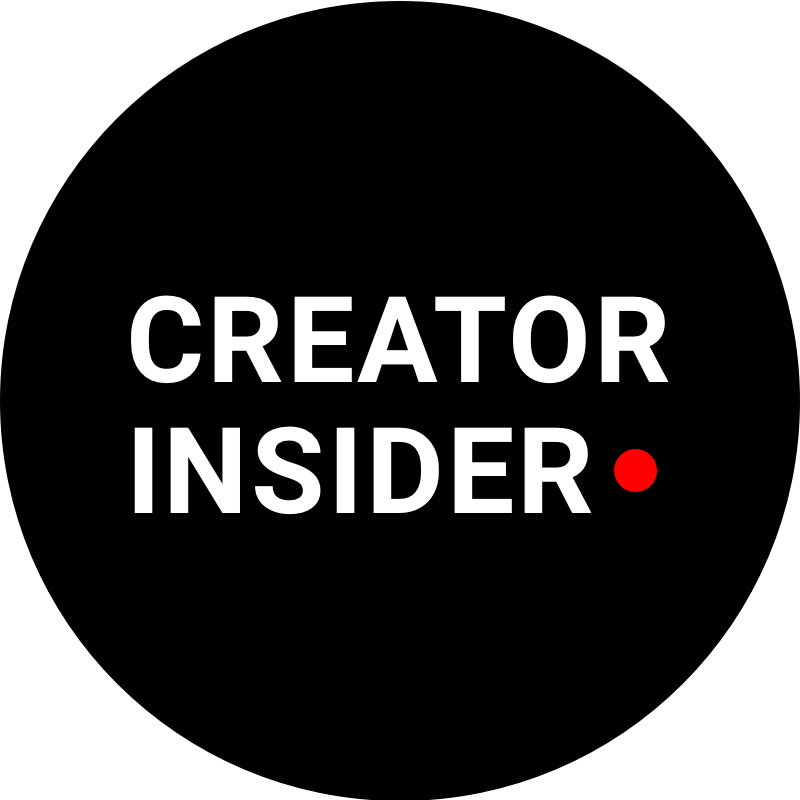
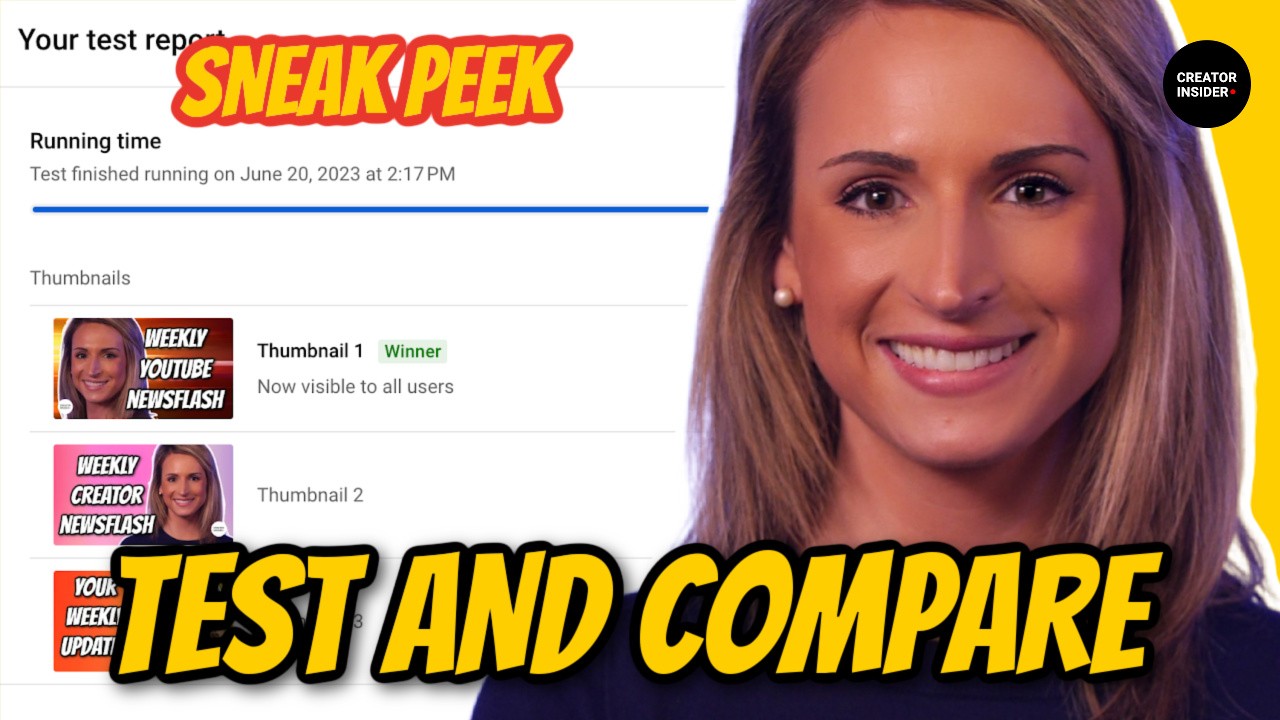 Creator Insider
Creator Insider
Click-through Rate (CTR) and Impressions
Understanding the significance of Click-through Rate (CTR) and Impressions is crucial for the success of a YouTube creator. This section delves into this key performance indicator, providing insights and optimization strategies for improving CTR on your YouTube videos.
What is Click-through Rate (CTR)?
Click-through Rate (CTR) on YouTube is the ratio of clicks your video thumbnail receives to the total number of impressions (views + non-views) it generates. High CTRs indicate that viewers find your video thumbnails and titles appealing, leading them to click and watch your content. A higher CTR usually results in better ranking, impressions, and viewership for your videos.
CTR Formula:
- CTR = (Number of Clicks / Number of Impressions) x 100
What are Impressions?
Impressions refer to the total number of times your video thumbnail is shown to viewers on YouTube. This includes appearances on the homepage, subscription feed, search results, and suggested videos. Impressions measure the reach and potential exposure of your videos on the platform.
Average CTR and Benchmarking
An average CTR of 2% - 10% is typically considered good on YouTube, though this may vary depending on factors like content type, audience, and niche. Comparing your CTR and impressions to industry benchmarks and competitor data can offer valuable insights into how your videos are performing.
Do's:
- Create eye-catching and professional-looking thumbnails that accurately depict your video's content.
- Craft compelling, clear, and concise titles that contain relevant keywords and trigger curiosity.
- Utilize trending topics and terms while staying true to your niche and content focus.
- Test different thumbnail designs and titles to determine what works best for your audience.
Don'ts:
- Never use misleading or clickbait thumbnails and titles that do not align with your video's content.
- Avoid using all capital letters or excessive punctuation in titles, as viewers may perceive this as spam.
- Don't overcrowd your thumbnail with text or clutter, making it difficult for viewers to understand.
Tools and Techniques for Improving CTR
-
Use A/B testing for thumbnail designs and titles to optimize for higher CTRs.
-
Research competitor video performance to get ideas for effective thumbnail designs and titles.
-
Utilize online courses and educational resources to learn how to make YouTube videos that appeal to viewers and boost your RTR.
-
Demonstrate the impact of updating thumbnails and titles on older videos to improve their CTR and viewership.
By applying the above strategies and optimizing your videos, you can increase your CTR and watch time, leading to higher rankings and YouTube success.
Content Freshness and Relevance
In today's fast-paced digital world, it's essential to keep your YouTube content fresh and relevant to maintain the interest of your subscribers and attract new viewers. This section will explore various factors of the YouTube algorithm that determine content freshness and relevance. We will also discuss tips to keep your content up to date and strategies to ensure your videos stay evergreen.
Why Freshness Matters
YouTube's algorithm prioritizes fresh content as users are always searching for the latest information, trends, and entertainment. Keeping your content updated increases your chances of being recommended on users' homepages and search results. Recent statistics show that 70% of YouTube watch time is generated through the recommendation system, emphasizing the importance of content freshness.
How YouTube Algorithm Determines Freshness
The YouTube algorithm considers several factors to determine content freshness, such as:
- Publish date: Recent uploads receive a temporary boost in recommendations.
- View velocity: The speed at which your video receives views can impact its freshness.
Strategies to Keep Content Fresh
To maintain content freshness and relevance, consider the following strategies:
- Upload frequently: Determine a suitable upload schedule based on your content type and stick to it. Consistency is essential for building a loyal audience and maintaining your content's freshness.
- Create evergreen content: Plan videos that remain relevant over time (e.g., educational tutorials). Evergreen content attracts viewers for a more extended period and encourages returning to watch your videos.
- Keep up to date with trends: Take note of current trends in your niche and create videos related to those subjects. Catching a trend early ensures relevance to your audience and the YouTube algorithm.
Creating fresh content doesn't always mean following trends. Consider these content options:
- How-to tutorials: Any content that provides valuable learning opportunities can be considered fresh.
- Product reviews: Offer your insight and thoughts on the latest products in your niche.
- Seasonal content: Focus on content related to holidays, events, or seasons that is both timely and relevant.
Do's
- Update old videos with new information.
- Collaborate with other creators to reach new audiences.
- Revisit successful video formats with updated information.
Don'ts
- Avoid creating clickbait content for the sake of freshness.
- Don't sacrifice quality for quantity; maintain a balance between fresh content and high-quality videos.
By following these best practices and understanding the importance of content freshness in the YouTube algorithm, you can create relevant and engaging content that attracts a wide range of viewers and retains your existing subscribers. For more resources on becoming a successful YouTube creator, check out our guide on how to make YouTube videos.
Watch Time and Audience Retention
Watch Time
Watch time is the total amount of time viewers spend watching your videos. It's a crucial factor that YouTube uses to determine your video's performance and how it ranks in search results. YouTube prioritizes videos with higher watch times, as it indicates that viewers are spending more time engaged with the content.
Some essential stats related to watch time are:
- Average View Duration: The average amount of time individual viewers spend watching your videos.
- Total Watch Time: The accumulated watch time from all viewers.
Do's:
- Create captivating and engaging content to keep your viewers watching.
- Implement effective video optimization strategies for SEO.
- Experiment with different video lengths and formats to find what works best for your audience.
- Encourage viewers to watch other related videos from your channel by using playlists, end screens, and annotations.
- Use an eye-catching thumbnail to attract more clicks.
Don'ts:
- Don't use clickbait thumbnails or misleading titles, as it will deter viewers from watching your content.
- Avoid lengthy introductions that can bore viewers.
- Don't use excessive ads, as it can be an annoyance to viewers.
Audience Retention
Audience retention is the percentage of your video that viewers watch on average. A higher audience retention rate means that viewers are staying engaged throughout the video. YouTube promotes videos with high audience retention rates because it represents quality content that keeps viewers interested and entertained.
How to Improve Audience Retention
- Analyze your YouTube Analytics to understand which part of your videos are engaging or causing viewers to leave.
- Hook your audience in the first few seconds with a strong introduction.
- Provide valuable information throughout your video to keep viewers engaged.
- Use visuals and animations to maintain viewers' attention.
- Edit your content to remove any unnecessary elements or long pauses.
- Implement storytelling techniques to make your content more engaging.
- Maintain a consistent and frequent content posting schedule to keep your audience engaged.
By understanding the relationship between watch time and audience retention, and applying these techniques, you can create high-quality content that keeps viewers engaged and improves your chances of ranking higher in YouTube's search algorithm.
To learn more about making engaging YouTube videos, check out these online courses and educational resources.
YouTube Search and Discovery


 YouTube Creators
YouTube Creators
YouTube Search and Discovery
Optimizing YouTube SEO
- 68% of users use YouTube to help make purchasing decisions (Google/Ipsos, 2020
- Videos in the top 10% of YouTube search rankings have an average retention rate of 43% (Backlinko, 2019
Do:
- Research keywords for your video topics and titles to make sure they are easily discoverable by your target audience.
- Optimize your video titles, descriptions, and tags with relevant and highly searched keywords.
- Create engaging custom thumbnails that lead to higher click-through rates (CTR).
- Focus on audience retention and watch time, as these are important metrics for YouTube's algorithm.
- Actively encourage viewer engagement through comments, likes, and shares.
- Consistently upload content and maintain a predictable schedule to keep your audience engaged.
Don't:
-
Ignore or neglect YouTube Analytics when optimizing your content.
-
Overuse tags or use irrelevant tags in an attempt to manipulate the algorithm.
-
Create clickbait titles and thumbnails that do not accurately represent the content in the video.
-
Overlook the importance of a captivating, keyword-rich video description.
-
Ignore the YouTube community guidelines, as violations can lead to penalties or even termination of your channel.
-
PewDiePie, a popular gaming and vlogging channel, consistently uses researched video titles, engaging custom thumbnails, and clearly tagged content. As a result, his channel now has over 110 million subscribers.
-
Tasty, a food and recipe channel, effectively utilizes engaging thumbnails of finished dishes, accurate descriptions, and a consistent upload schedule to maintain its extensive subscriber base (20.6 million subscribers.
As a YouTube creator, your priority should be understanding and implementing YouTube SEO practices to help your content rank higher in search results and improve its discoverability. Be sure to also check out additional online courses and educational resources to further expand your knowledge and expertise in optimizing your YouTube content.
YouTube Search and Discovery
In the world of online video content, YouTube playlists serve as a powerful tool for search and discovery. They offer viewers a curated collection of videos, providing a more enjoyable and engaging experience. While playlists are essential for organizing and structuring your content, they can also help in the growth and exposure of your channel.
According to YouTube's statistics, playlists account for 20% of viewership on the platform, and on average, viewers watch about 40 videos per session when navigating through playlists. This clearly highlights their substantial role in enhancing engagement among users.
Playlists enable easy access to past content: The Crash Course channel employs playlists to organize their educational content by subject matter, making it effortless for viewers to find the videos they need.
Do's and Don'ts:
Do
- Create playlists for each theme or topic covered by your channel.
- Update your playlists regularly with new content to keep them relevant.
- Optimize playlist titles, descriptions, and thumbnails for SEO.
- Feature high-performing videos at the top of the playlist to increase engagement.
- Promote your playlists on various social media platforms to reach a broader audience.
Don't
- Don't create dense playlists with too many videos, as it may discourage viewers to navigate through them.
- Don't make your playlists too niche, leaving out potential viewers with diverse interests.
- Don't create playlists solely for self-promotion; provide value and entertainment to your audience.
- Don't neglect playlist optimization - treat it with as much importance as your video SEO.
Charts and Tables
- To guide users in developing effective playlists, you can create a table outlining the best practices for playlist creation and optimization.
For more resources on YouTube content creation and optimization, check out our article on how to make YouTube videos.
YouTube Search and Discovery
YouTube Suggested Videos Algorithm
Overview of YouTube Suggested Videos Algorithm
YouTube's algorithm focuses on three main goals:
- Find the right video for each viewer
- Encourage users to watch more content and stay on the platform longer
- Show a diverse range of content on the platform
To achieve these goals, the algorithm evaluates user and video signals, such as:
- Video performance
- User engagement
- Metadata (title, description, and tags)
Key Factors Influencing YouTube Suggested Videos Algorithm
-
Watch Time: The total time users spend watching your videos. The longer the watch time, the higher the likelihood of your video being suggested.
-
User Engagement: The number of likes, comments, shares, and subscribes generated by your videos. High user engagement signals that your videos are popular and appealing, thus increasing their chances of being suggested.
-
CTR (Click-Through Rate): The ratio of viewers clicking on your video's thumbnail to the total number of times your video was shown. A high CTR indicates that your video's thumbnail, title, and description successfully attracted viewers' attention and enticed them to watch your content.
Do's:
- Publish high-quality videos that encourage users to watch until the end
- Increase user engagement by asking viewers to like, comment, and share your videos
- Optimize your metadata with relevant keywords to make your videos discoverable
- Experiment with publishing times and frequency to identify when your audience is most active
- Collaborate with other creators to reach new audiences and boost your visibility
Don'ts:
- Avoid misleading or clickbait titles, thumbnails, or descriptions
- Don't ignore negative feedback or comments – address any issues and learn from them
- Avoid violating YouTube's community guidelines or copyright rules
By understanding the core principles of YouTube's Suggested Videos Algorithm and optimizing your content accordingly, you can significantly increase your videos' visibility, reach, and user engagement. For more tips and insights on how to make successful YouTube videos, check out our guide on how to make YouTube videos.
Looking for Brand Deals or Channel Strategy?
We run a platform for brand deals and an agency, helping creators derive maximum value from their content, while offering brands access to unparalleled, best-in-class research.
For Creators
- Strategic Brand Connections
- Outreach to Old Sponsors
- Platform to Manage Brand Deals
- View-Based Contract Negotiation
- Comprehensive Channel Strategy
- Channel/Thumbnail Optimization
For Brands
- Tools to Shortlist Creators
- Targeted Creator Outreach
- Detailed Sponsorship Reports on Existing Brands
- Platform to Manage Creator Deals
- View-Based Deal Facilitation
For Creators
- Strategic Brand Connections
- Outreach to Old Sponsors
- Platform to Manage Brand Deals
- View-Based Contract Negotiation
- Comprehensive Channel Strategy
- Channel/Thumbnail Optimization
For Brands
- Tools to Shortlist Creators
- Targeted Creator Outreach
- Detailed Sponsorship Reports on Existing Brands
- Platform to Manage Creator Deals
- View-Based Deal Facilitation
Apply to work with us or email [email protected]

Table of Contents
Work with us